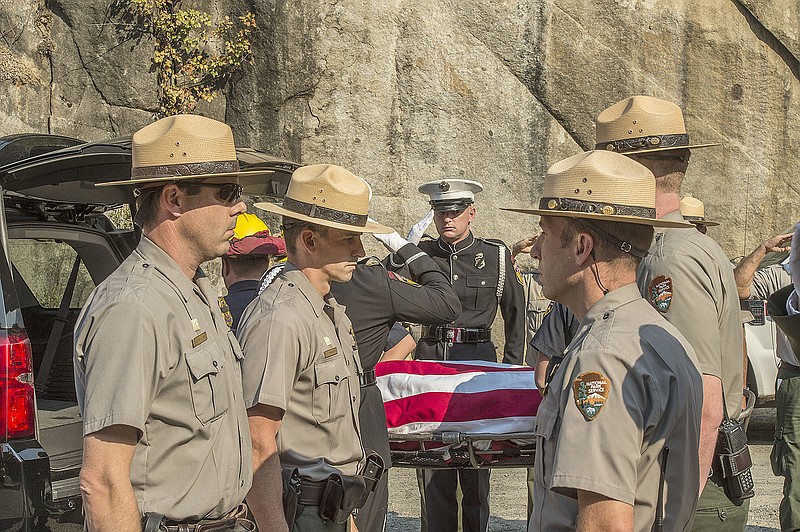LOS ANGELES (AP) - The 2014 fatal crash of an air tanker fighting a forest fire in Yosemite National Park came just after the pilot was warned to avoid a tree to the right but then struck trees to the left, according to a National Transportation Safety Board report.
Soon after the plane went down investigators came to believe its left wing probably struck a tree. The report released Wednesday provides new details on what led up to the crash, which killed pilot Geoffrey "Craig" Hunt, 62, but does conclude what caused it.
The board is expected to determine the probable cause within about 45 days, said Janet Upton, spokeswoman for the California Department of Forestry and Fire Protection, which was operating the aircraft under control of the National Park Service when the crash occurred Oct. 7, 2014.
The twin-engine S-2F3AT was working with a tactical aircraft over the fire and another airplane that flies ahead of retardant-laden air tankers to guide them to drop points. Both support planes reported good visibility.
According to the report, the guide plane flew a proposed route and released smoke to show Hunt where to drop retardant. The approach included a slight left turn and then a right turn to exit the area.
The guide pilot "described a predominate tree off to the right of the flightpath as a hazard, and instructed the accident pilot to stay to the left of it," the report said.
The guide pilot asked Hunt if he had seen the smoke and if the route looked OK, and he agreed, the report said.
The guide pilot then began leading the tanker on the actual retardant run, describing the drop and flightpath and saying there would be a thin layer of wildfire smoke but he would see through it and break clear of it before reaching the drop, the report said.
Hunt said "OK" in his last communication with the guide plane.
The crew of the tactical aircraft overhead reported the tanker appeared to strike trees with its left wing while on final approach for the drop. The tanker crashed into the top of 800-foot-tall rock cliff and wreckage fragmented into a river valley below.
Examination of wreckage showed the outer end of the tanker's left wing had been sheared off and a severed treetop was lying on the ground. Both engines were still producing power at the time of impact, evidence showed.
The report said Hunt was in radio communication with his base and the other two aircraft throughout the mission and did not express any concerns about the flight or report any mechanical problems. His cause of death was determined to be multiple blunt-force injuries and there were no toxicological anomalies.
The tanker was originally built as a Navy anti-submarine warfare plane in 1966 and was remanufactured as a tanker in 2004.

